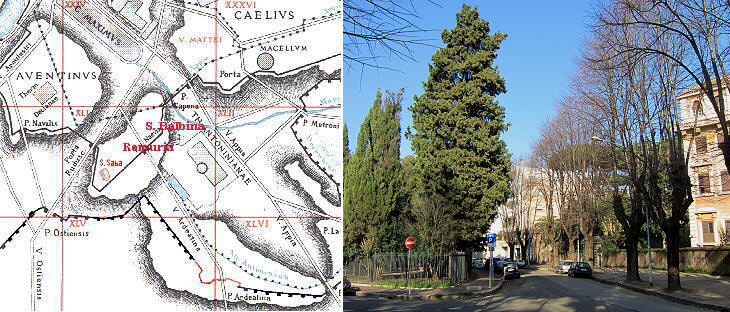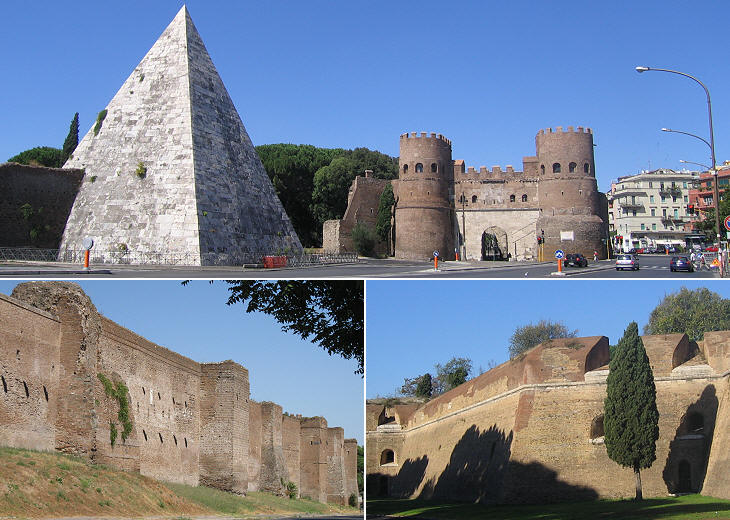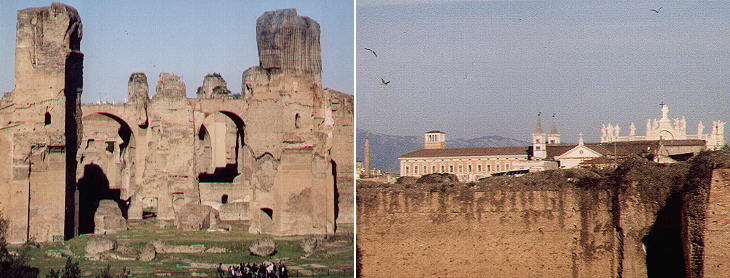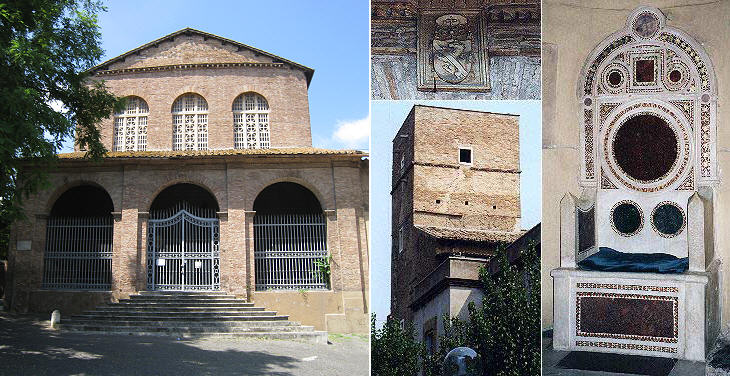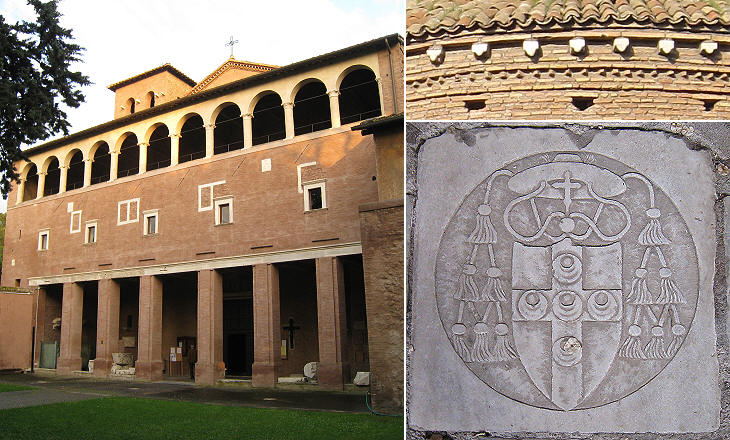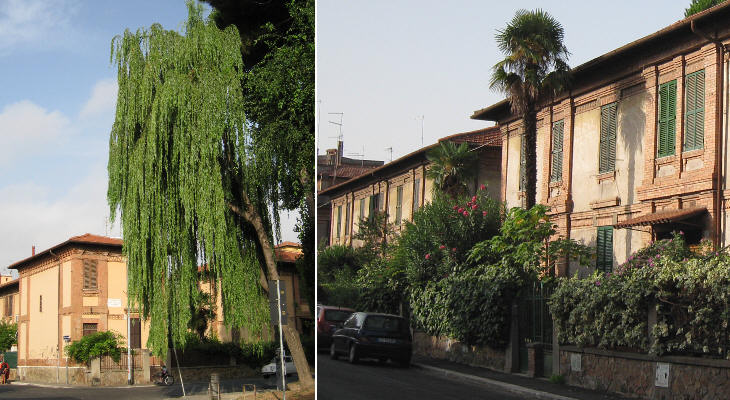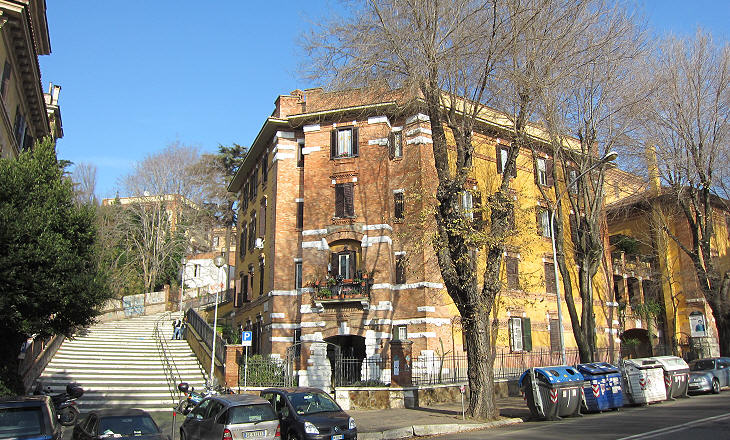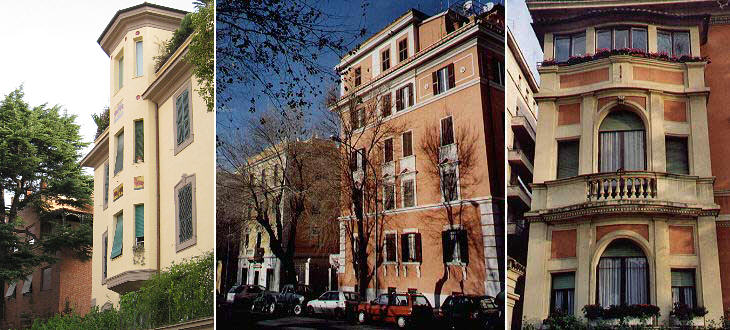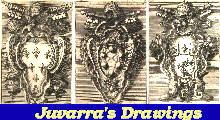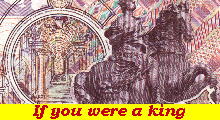  What's New! Detailed Sitemap All images © by Roberto Piperno, owner of the domain. Write to romapip@quipo.it. Text edited by Rosamie Moore. |
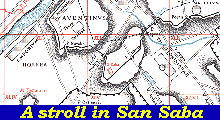 A Stroll in San Saba A Stroll in San Saba
Welcome to this Sunday stroll in San Saba. Romulus and Remus
Rome was built on seven hills, starting with the Palatinus. The legend says it was founded by Romulus, but why by him and not by his twin brother Remus? To sort out whom of the two should give his name to the new town (Roma after Romulus or Remuria after Remus) the priests decided the twins should look for a sign in the sky. So Romulus went on top of the Palatinus and Remus on top of the Aventinus, a nearby hill, to watch for crows. It is the first recorded case of birdwatching in the history of mankind. Romulus had better eyesight (or Jupiter preferred him) and so he was designated to be the founder of the new town which took his name and his house on the Palatinus originated the word palace. Poor Remus did not take it well: he crossed the furrow which indicated the area of Rome and Romulus killed him. Later on Rome expanded on six other hills including the Aventinus. This hill is made of two peaks, the Aventinus close to the river and the Little Aventinus or San Saba (after the church) in the interior. Walls were erected during the republican period and in the map drawn by Rodolfo Lanciani at the end of the XIXth century you can see them crossing the two peaks (in the map black means Roman Rome and red means Christian Rome). Let's start our stroll from this little square with cypresses. It's Piazza Remuria the spot where Remus was looking for crows and possibly the initial site of his town. The Walls
Let's now look at the walls, which protect San Saba from the modern barbarians i.e. the cars. In the year 275 AD Emperor Aurelianus built new walls to protect Rome. On the Aventinus they were very close to the old ones, while at other points they included large flat lands like the Campus Martius, the area between Capitol hill and the river. The Romans used to build burial monuments along the roads immediately outside the walls: Caius Cestius a very rich man wanted for himself a pyramid and Aurelianus a few centuries later incorporated it in the new wall. The gate (Ostiense or S. Paolo) was enlarged into a small castle in medieval times. The walls were fortified with many towers. In the XVIth century Pope Paul III decided to upgrade the walls to new military architecture and asked Sangallo Junior (a great expert) to make a pilot in San Saba. You see the imposing results in the picture above lower right. The View over Caracalla
The northern flank of San Saba looks upon the ruins of the Baths of Caracalla and beyond them you can see the profile of St. John in Lateran. Santa Balbina
After the fall of the Roman Empire San Saba was nearly completely abandoned. Only two medieval churches were founded using part of existing buildings. Santa Balbina had also a monastery attached to it in the form of a little fortress with a tall tower which commands a fine view. Inside a masterpiece by Johannes Cosmas. The church bears the coat of arms of Cardinal Balbo, nephew of Pope Paul II. The street leading to S. Balbina is one of the few Silent Streets of Rome. St Saba's
St Saba's is the parish church. Every May a procession starts from the church and goes through the streets of the quarter. It may not be as popular as Trastevere's Festa de Noantri, but the locals like it.
St Saba's is a church of great antiquity, but almost entirely rebuilt in 1465 by Cardinal Enea Silvio Piccolomini who became Pope Pius II (you can see his coat of arms with the five moons). The apse shows a simple brick decoration which inspired...... ... The New Development
In 1909 the hill of San Saba was chosen for a new development. The plan, unlike many other developments in Rome, called for small houses rather than large buildings.
They were intended to host poor people, but they were built with grace and inspiration. The new streets were named after Baroque artists so the main square is dedicated to Gian Lorenzo Bernini, who was luckier than his rival Francesco Borromini who was relegated to the steps you see on the left of the image. In the 1930s other houses were built at the foot of the hill. Some of them have no pretensions, but a few show the hand of a good architect: the shape of the little covered balcony in the image here below is clearly inspired by the balcony of Palazzo della Regina di Polonia.
 SEE THESE OTHER EXHIBITIONS (for a full list see my detailed list). |
